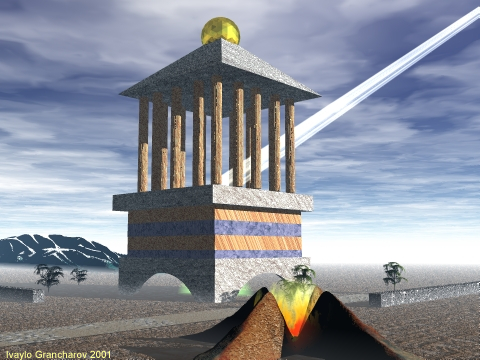|
|
|


The structure was rectangular in plan, with base dimensions of about 40 m (120 ft) by 30 m (100 ft). Overlying the foundation was a stepped podium which sides were decorated with statues. The burial chamber and the sarcophagus of white alabaster decorated with gold were located on the podium and surrounded by Ionic columns. The colonnade supported a pyramid roof which was in turn decorated with statues. A statue of a chariot pulled by four horses adorned the top of the tomb. The total height of the Mausoleum was 45 m (140 ft). This is broken down into 20 m (60 ft) for the stepped podium, 12 m (38 ft) for the colonnade, 7 m (22 ft) for the pyramid, and 6 m (20 ft) for the chariot statue at the top. The beauty of the Mausoleum is not only in the structure itself, but in the decorations and statues that adorned the outside at different levels on the podium and the roof. These were tens of life-size as well as under and over life-size free-standing statues of people, lions, horses, and other animals. The statues were carved by four Greek sculptors: Bryaxis, Leochares, Scopas, and Timotheus, each responsible for one side. Because the statues were of people and animals, the Mausoleum holds a special place in history as it was not dedicated to the gods of Ancient Greece. Since the nineteenth century, archeological excavations have been undertaken at the Mausoleum site. These excavations together with detailed descriptions by ancient historians give us a fairly good idea about the shape and appearance of the Mausoleum. A modern reconstruction of the shorter side of the Mausoleum illustrates the lavish nature of the art and architecture of the building... a building for a King whose name is celebrated in all large tombs today -- mausoleums.
(excerpt from the text of Alaa K. Ashmawy)